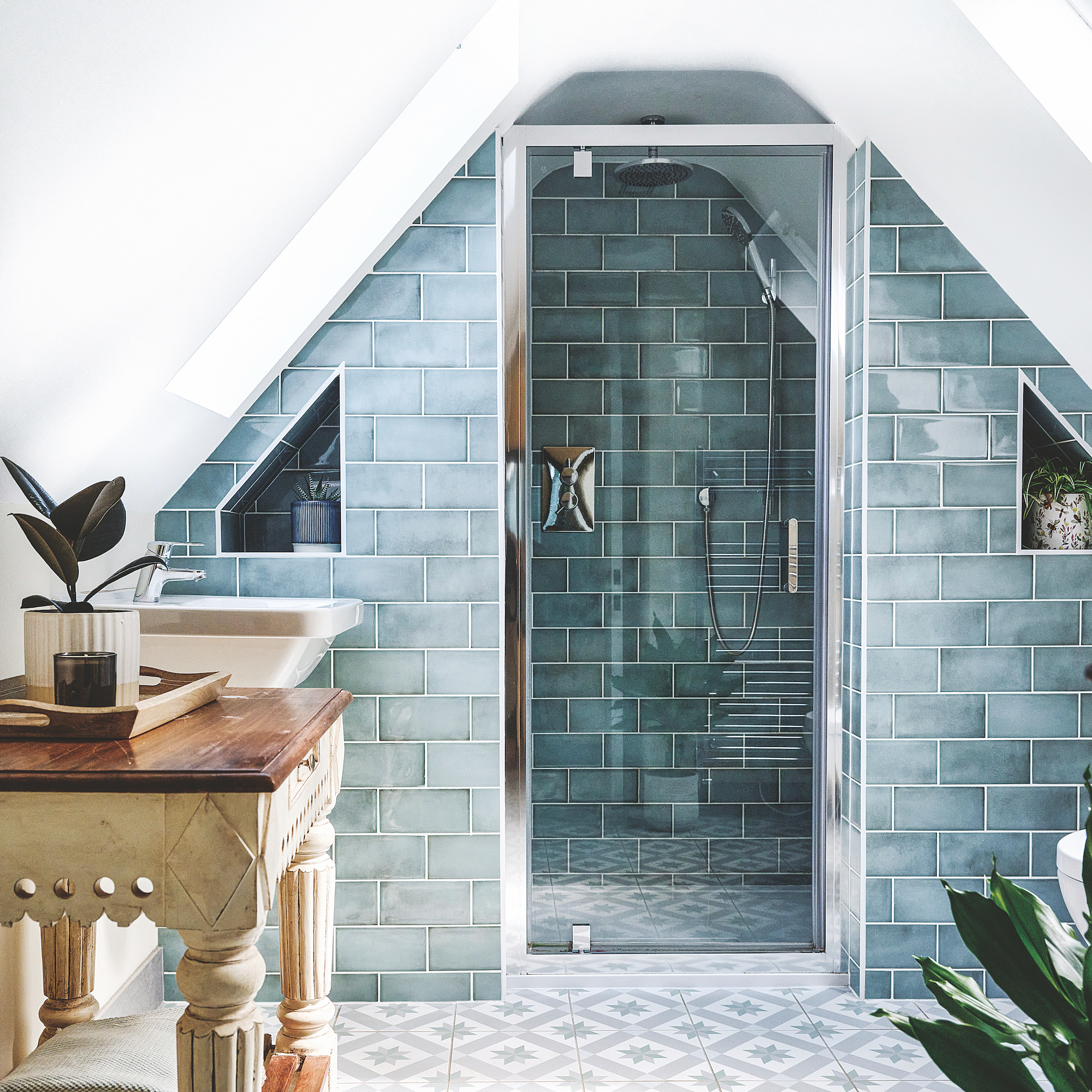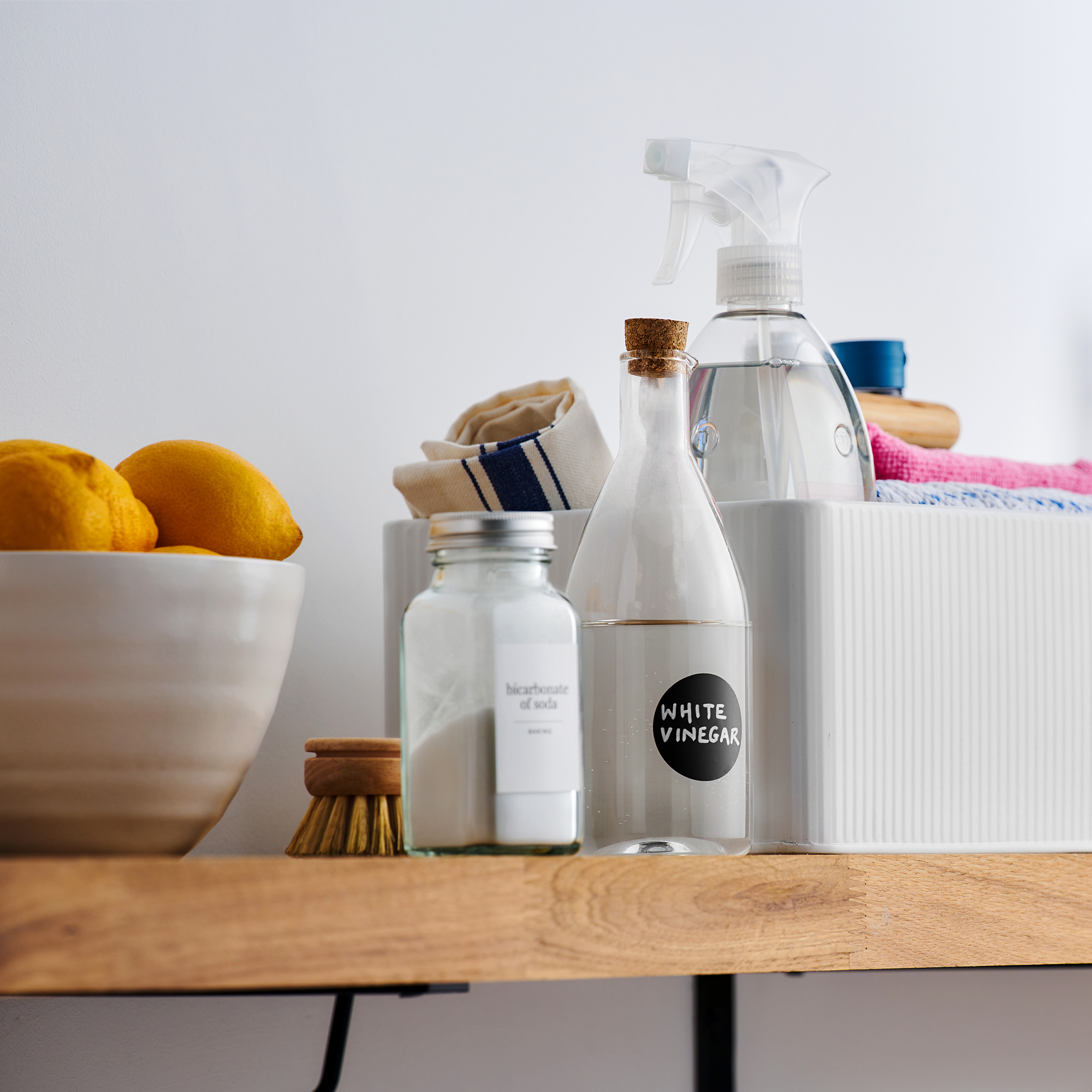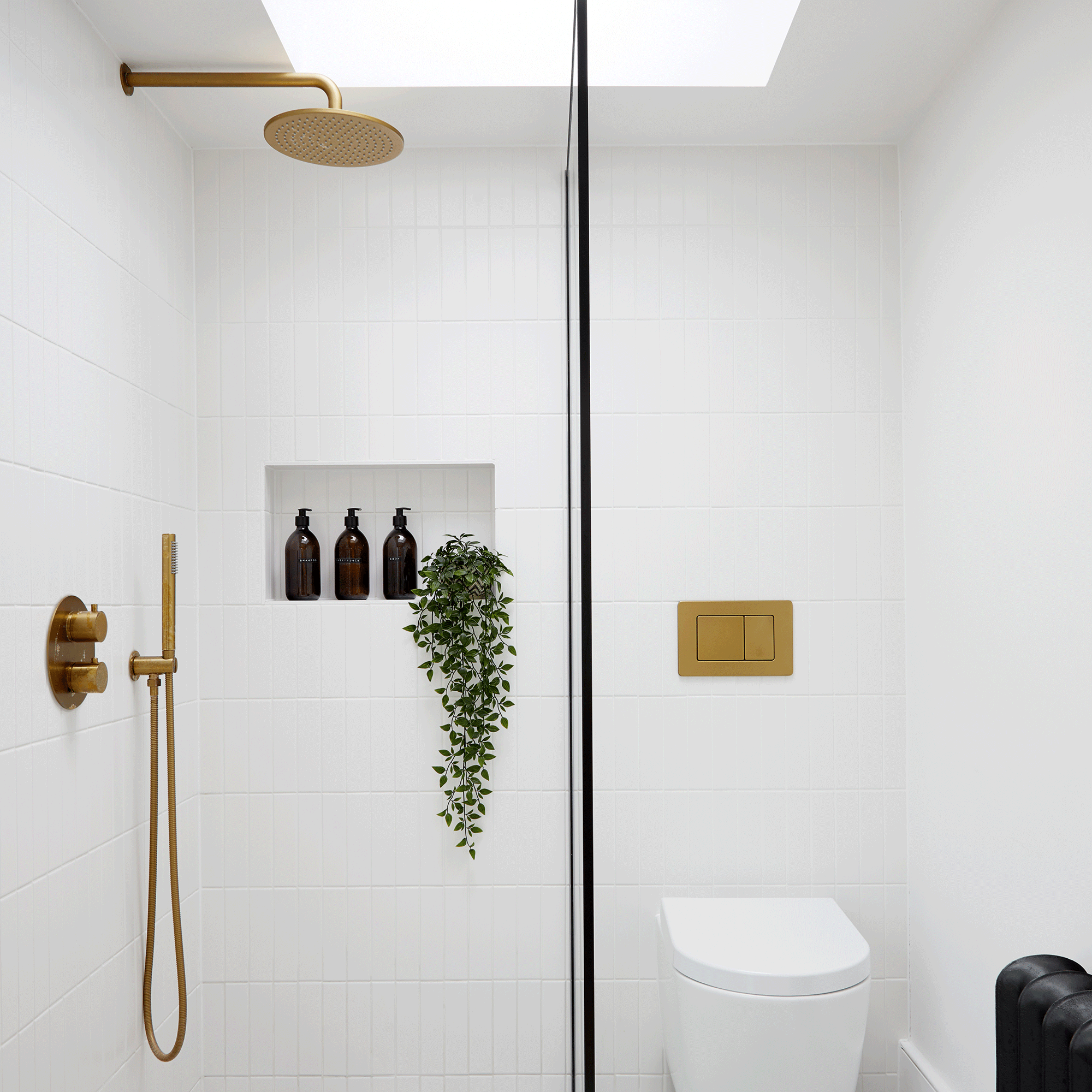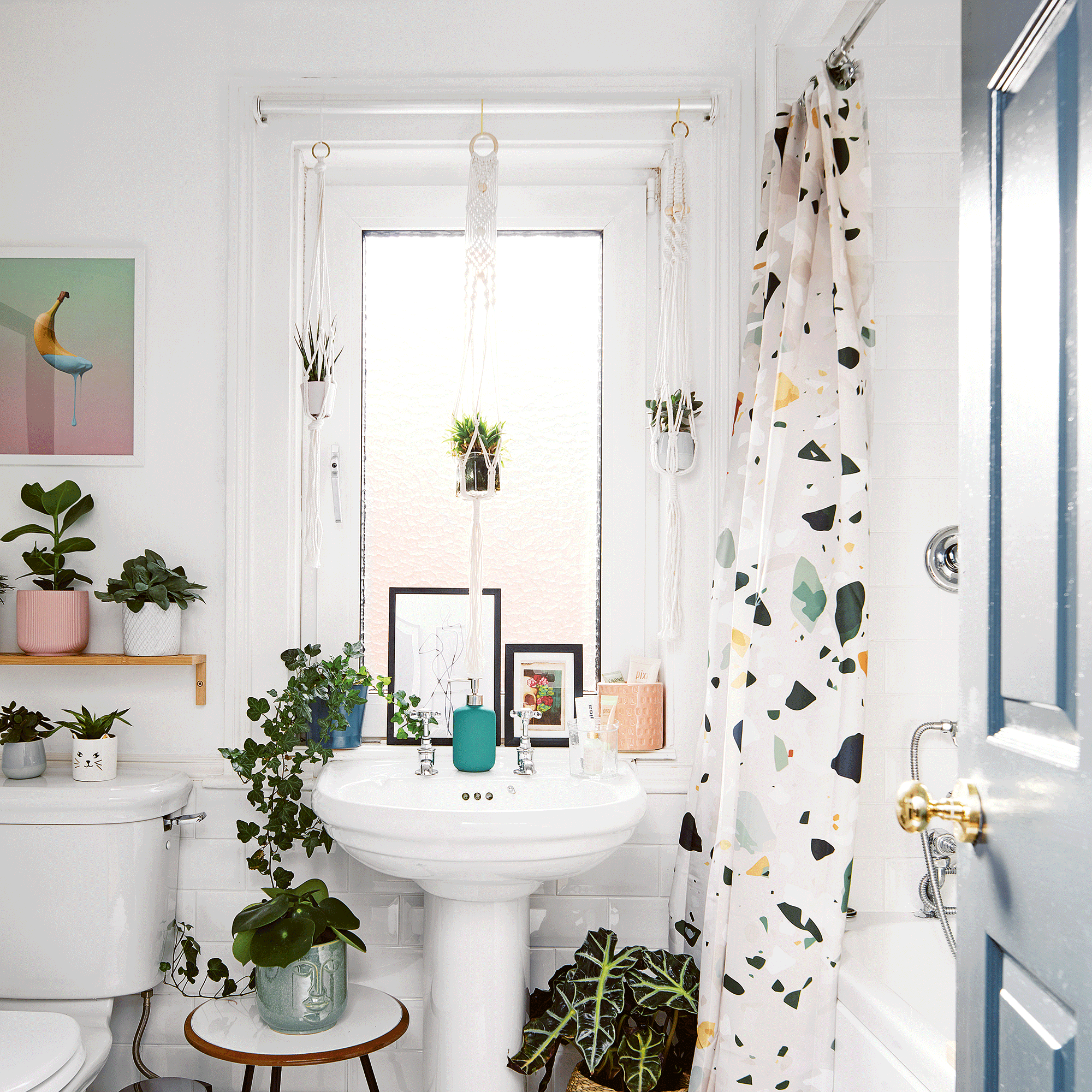How to clean a shower drain - keep nasty smells at bay and prevent clogs with these two ingredients
You may have battled the clogs, but are you cleaning your shower drain on a regular basis?


What many people don’t realise is that the age-old question of ‘how to clean a shower drain’ doesn’t have a simple answer. On one hand, some want to know how to fix a clogged shower drain. On the other hand, others want to know how to keep a shower drain clean, regardless of clogs.
But if you’re someone who wants to keep on top of their bathroom in terms of style and cleanliness, knowing how to clean a shower drain as part of regular maintenance is incredibly important. After all, showers are a high-traffic area of the home, and shower drains are bombarded with water, soap, and even skin cells on a regular basis.
Left untreated, this can lead to a build-up of bacteria that can result in nasty smells, clogged drains, and stains in and around your bathroom. But you don’t have to sit back and wait for that to happen.
How to clean a shower drain
‘Shower drains are essential parts of our daily hygiene routines, yet they often go overlooked until a problem arises,’ says Simon Allen, the co-founder of Fountain Filters.
Thankfully, you don’t have to use corrosive or chemical cleaners to clean a shower drain. White vinegar has become one of the best cleaning products on our roster, and by mixing this store cupboard essential with baking soda, you can successfully clean your shower drain and banish bacteria for good. This is how to do it.
What you’ll need
- Drain snake - like this Forlivese Plumbing Snake from Amazon
- Baking soda
- White vinegar
- Boiling water
Step-by-step
1. Unclog the drain
It’s important to maintain a regular cleaning schedule for your shower drain, no matter whether you have a walk-in shower or a shower head in your tub. But what’s the point in cleaning a shower drain without addressing the main issue first? There are many tell-tale signs that your shower drain is clogged, the main one being slow water drainage.
So, before you start thinking about cleaning your shower drain, it’s always a good idea to get in there with a shower drain snake first - even if you don't think you have a clogged drain. ‘Simply send the retractable cable into the drain and pull out the blockage,’ explains Brett Cullen, Head of Content and Brand at Plumbworld.
Sign up to our newsletter for style inspiration, real homes, project and garden advice and shopping know-how
This will remove any loose hair or scum, making the cleaning process even easier and way more effective. However, Brett has issued a warning to those using a drain snake for the first time, as it ‘may damage your plumbing if used incorrectly.’
Always make sure you read the instructions that come with the specific drain snake you buy to prevent this from happening.

2. Boil some water
When you are confident that your drain isn’t clogged, you can then move on to the first step in the cleaning process. And all you need to do is boil some water.
Pop on your best kettle and boil around four cups of water before pouring the whole thing down your shower drain. However, it’s important to note that if you have PVC pipes running from your shower, it’s best to ditch the kettle in favour of hot water from the tap.
The last thing you want is to melt your pipes, after all.
3. Add baking soda and vinegar

As soon as you’ve poured the boiling water down the shower drain, grab one cup of baking powder and pour it down there, too. Then, follow that up with one cup of white vinegar.
You should immediately hear the magic start to happen. The drain should start fizzing, and you might even see some bubbles as you look down the drain. These are both good signs that the chemical reaction between the baking soda and vinegar is working.
4. Flush the drain
Ideally, you should leave the natural concoction to work its magic for at least 10 minutes, but it’s always a good idea to leave it for half an hour if you have a stubborn drain.
When the countdown is over, boil the kettle once more and flush the drain with the boiling hot water. This will not only push out the baking soda and vinegar mixture but also push out any remaining scum, soap, or bacteria that may want to linger around.

How to keep a shower drain clean
When you’ve followed all of those steps to clean your shower drain, it would be a shame to let it fall back into disarray. But as you probably use your shower on a very regular basis, it can very easily fall victim to clogs and bacteria growth. That’s why it’s important to keep on top of your shower drain maintenance and keep it clean all year round.
Maintain a regular cleaning schedule: It’s recommended that you give your shower drain a good flush with baking soda and vinegar at least once a month to keep it free from any nasties and to prevent any unwelcome smells. Of course, this is just a guide and is dependent on how often you use the shower. Carol Harding at HomeAdviceGuide.com suggests, ‘If there are multiple people in your home using the shower to wash their hair, you may need to clean the drain weekly to keep on top of things.’
Use a drain catcher: While a drain snake is used to remove hair and debris inside the drain, a drain catcher is used to stop it from going inside in the first place. These normally sit on top of the plug hole and will trap anything that tries to get down there without impeding water flow. You can find so many of them on Amazon.

Change your shower products: No shower would be complete without using a shower gel or soap, which means it’s impossible to keep soap scum out of the shower drain. However, changing up your thick shower products and opting for thinner alternatives can definitely help to keep your shower drain clean. This means ditching anything that includes large exfoliating beads or thick chunks.
Invest in a water filter: According to Simon, hard water can have a negative impact on your shower drain. ‘The minerals from the hard water combine with soap and other products you use, creating stubborn, film-like residue in your shower that can be difficult to remove,’ he explains. And while it may not be an option for everyone, investing in a water filter to soften this hard water should keep your drain cleaner.
FAQs
What will dissolve hair in a drain?
Unfortunately, hair is normally the number one culprit when you have a clogged drain. This hair gets wrapped inside the drain, causing blockages and affecting the flow of water. This results in nasty smells and clogged pipes that are a nuisance to every homeowner.
Baking soda can help with this problem, though. Baking soda is known for dissolving hair in a drain, but you need to make sure that you leave it there for a few hours to really work its magic. If you can, add some vinegar into the mix as well so you can clean your shower drain at the same time.
Of course, there are also commercial drain unblockers that claim to offer the same service. But these can be corrosive and full of chemicals, which might not work for those looking for more natural cleaning methods.
How do you clean a shower drain trap?
The best way to clean a shower drain trap is to give it a flush with a mixture of boiling water, baking soda, and white vinegar. This will result in a chemical reaction that will fizz its way through the trap, cleaning it as it goes.
After letting it work its magic for at least 10 minutes, flush the trap with some more boiling water to remove any leftover baking soda or vinegar.
It’s suggested that you should do this at least once a month or more often if your shower is used by multiple family members multiple times a week.

Lauren Bradbury has been the Content Editor for the House Manual section since January 2025 but worked with the team as a freelancer for a year and a half before that. She graduated with a Bachelor’s degree in English and Creative Writing from the University of Chichester in 2016. Then, she dipped her toe into the world of content writing, primarily focusing on home content. After years of agency work, she decided to take the plunge and become a full-time freelancer for online publications, including Real Homes and Ideal Home, before taking on this permanent role. Now, she spends her days searching for the best decluttering and cleaning hacks and creating handy how-to guides for homeowners and renters alike, as well as testing vacuums as part of her role as the Ideal Home Certified Expert in Training on Vacuums, having spent over 110 hours testing different vacuum models to date!